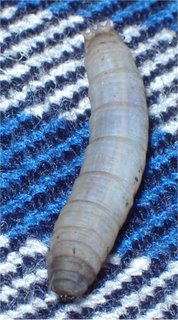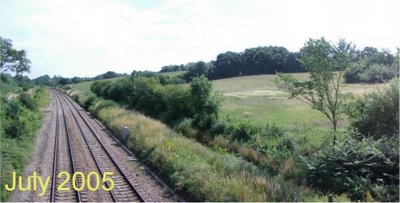
Look at fallen wood, however, and you find some very strangely shaped bracket fungi. Some are shaped like ears:

and others look like some kind of frilly jellyfish.

When we regrettably have to cut trees down we always try to leave the logs as a habitat for wildlife, both fungi and insects.

Have you seen the improvements to the paths in the Western Wood? If you walk the area regularly you will remember that the surfaces on the steepest parts were washed away by heavy rain.

We've improved the drainage, put in some shallow steps to break the flow of the water, and changed the camber of the path so that water flows towards the ditch. The work has been financed by a Landfill Tax grant from the South Gloucestershire Environmental Body.

























